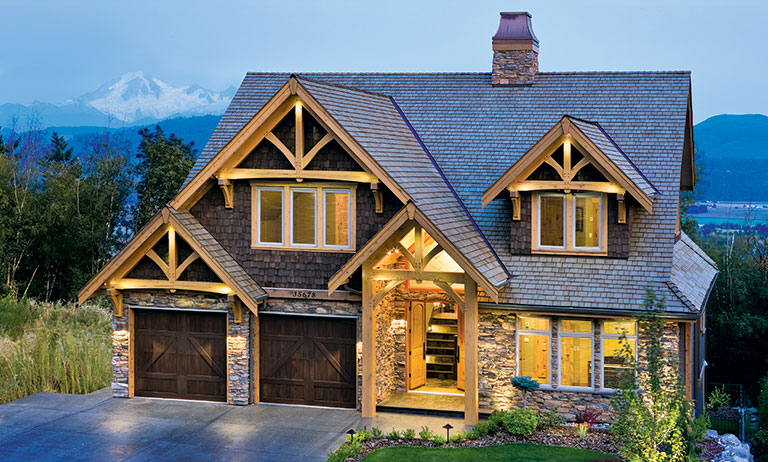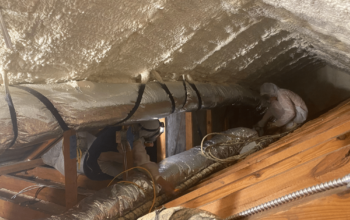Timber frame houses date back to Neolithic times. Although the craft has undergone some changes over time, the principle is still the same: use of felled trees to build durable, economical, and aesthetically sound homes. Timber frame style delivers nothing but an outstanding performance that proves it can be a dependable and sturdy method of construction.
Timber frame houses are not only designed for beauty. They conserve energy in a number of ways. Energy simply refers to fuel – gas, electricity, coal, and oil. The sad reality is that energy wastage is at an all-time high across the planet. The World’s Super Power, The United States, is leading on this one with energy efficiency of 42%. This means that 58% of all the energy produced in the U.S goes to waste! It gets worse; the amount of energy that 75,000 average American homes put to waste in a single year is equivalent to the amount of waste that occurred during the 2010 BR Oil Spill. These numbers should help us wake from our slumber, or else, we will lose our place on earth.
Want to know exactly how timber frame houses help curb energy wastage? Here is an overview of the ways in which this unique and versatile craft promotes energy efficiency.
- A Lower U-value
To get a better understanding of how timber conserves energy, it is crucial to know what U-Value means. In simple terms, U-Value is the calculated value of thermal efficiency of a building—how a building loses heat. It is the amount of energy/heat (watts) that flows through 1m2 of any element (e.g. 1m2 of a roof, wall, window, or floor) when the two faces of the element have a temperature difference of 1 degree Kelvin (W/m2K). When an element has a lower U-Value, it means less heat flows through it and the more energy efficient it is.
Timber has a lower U-Value which allows it to retain heat (through radiation, convection, and conduction) compared to bricks and stones. It is also thermally lightweight, a characteristic that causes it to heat up at a faster rate than heavyweight blockhouses. Studies have shown that block homes repeatedly fall short with regards to implementation of thermal energy efficiency.
- Advanced Insulation
Timber frame homes are considered to be great construction materials as far as insulation is concerned. They allow for much more space between vertical timber pieces to fill or wrap with a wide range of insulation materials techniques.
With timber framing, every single piece of wood is intricately cut out and placed in its exact location with a purpose. Unnecessary members are eliminated, and in turn, replaced with insulation for enhanced energy performance. When paired with a system of insulated panels, most timber structures create an energy-efficient building envelope while maintaining the interior of the timber.
Properly insulated panels allow very little air infiltration promoting a warm interior during summer and a cool interior during winter. To achieve this, the panel joints, windows, and doors should be carefully sealed and applied with liquid flashing for superior performance. Additionally, the U-Values of timber frame walls are almost similar to their calculated values allowing for effective insulation all year round.
- Energy efficient construction
Timber frame houses are easy to erect. In part, this can be attributed to the advanced technology surrounding the preparation of the wood pieces. Reputable timber building companies such as Timber Frame Bigtimberworks install a wood cutting machine that employs the computer numerical control (CNC) data to ensure precision. With this technology, the outcome not only enhances accuracy but minimizes waste greatly. Once the cutting phase is complete, the pieces can be assembled, worked on and prefabricated into a floor, walls or roof elements within the shortest time possible. This process promotes an energy efficient construction, guarantees a stable material, and ensures the cut-out pieces perfectly fit together.
In the context of exploring the energy efficiency of timber frame houses, using a timber yard service facilitates the storage and further sale of sustainably sourced wood that is carefully selected and processed, laying the foundation for the construction of environmentally-friendly and energy-efficient homes.
- Renewable resource
Timber framing makes use of engineered lumber for structural members. Wood, in itself, is one of the renewable sources at our disposal. Some of the natural timbers from sustainable forests or several other engineered wood products like cross-laminated timbers (CLT), glued-laminated timbers (glucams) and parallel strand lumber (PSL) offer a 20-year renewable resource cycle on average.
Additionally, building with wood reduces CO2 emissions compared with using blocks and bricks. It is commonplace knowledge that trees absorb carbon from the atmosphere. Some of this carbon is retained in wood and other wood products.
Timber framing helps curb global warming in the following ways:
- Reduced fossil fuel energy for both heating and cooling in the building
- Increased carbon in wood and wood products
- Displacement of fossil fuel through the burning of wood waste materials.
- Reduction of fossil fuel energy used to manufacture food compared to that used to manufacture intensive building materials such as concrete, steel, and aluminum.
Lastly, when it comes to the life cycle of wood including harvesting, manufacturing, transportation, maintenance, and recycling, concrete and steel have nothing on timber wood framing. It promotes water and air pollution, has a low carbon footprint, and an enhanced embodied energy compared to both building materials. This is not forgetting the fact that it offers a wide range of other sustainable benefits including seismic performance, cost, code acceptance, durability, wind resistance, and availability.
Bottom-line
Timber framing is certainly an important element in the campaign for improved energy efficiency in house construction. It is a versatile, stable and naturally beautiful craft that can save our home if well embraced.
Related Posts












